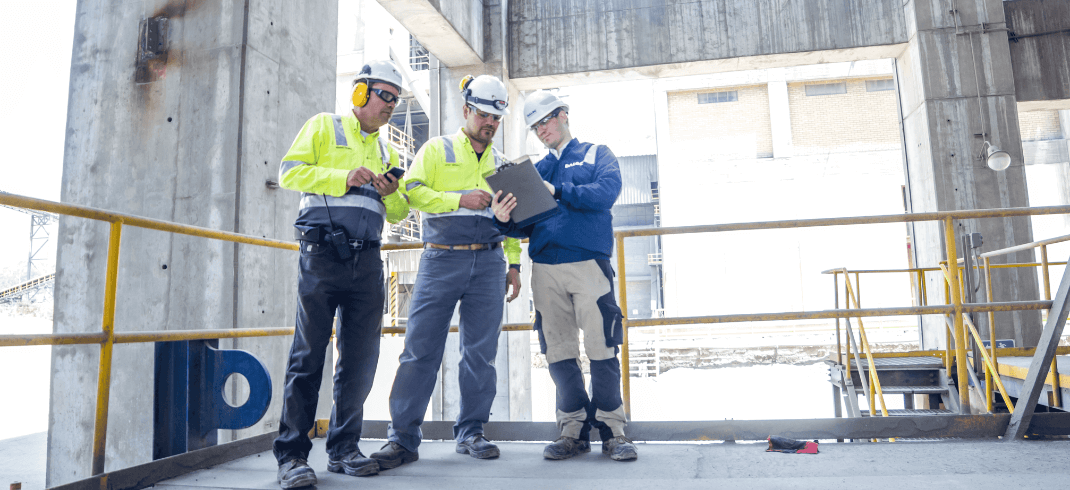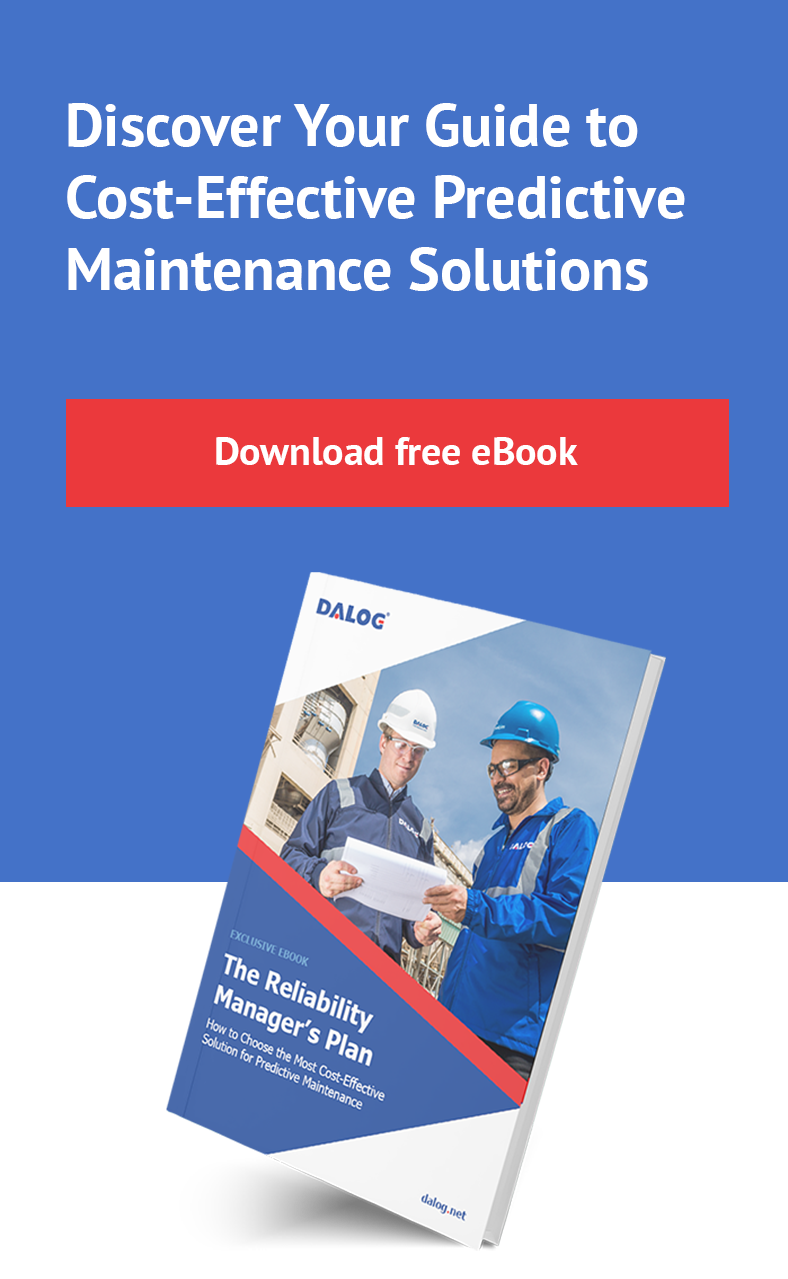The Benefits of Predictive Maintenance for Optimizing Cement Plant Operations
Predictive maintenance is a data-driven approach to maintenance that helps identify when equipment is likely to fail It can reduce downtime, increase equipment lifespan, and lower maintenance costs by analyzing sensor data and other sources.
According to the U.S. Department of Energy, predictive maintenance is highly cost-effective, saving roughly 8% to 12% over preventive maintenance and up to 40% over reactive maintenance.
Predictive maintenance has become increasingly important in the cement industry in recent years. On average, it increases productivity by 25%, reduces breakdowns by 70%, and lowers maintenance costs by 25%. Downtime and maintenance costs can significantly impact plant productivity and profitability, making it essential to keep machines running efficiently.
By implementing predictive maintenance programs, your cement plant can reduce the risk of equipment failure, optimize production efficiency, and improve overall profitability.
- The Role of Crushers, Mills, and Kilns in Cement Production
- Challenges Faced in Cement Production
- Predictive Maintenance for Cement Plants
1. The Role of Crushers, Mills, and Kilns in Cement Production
Cement production involves several steps, with crushers, mills, and kilns being critical components.
Crushers break down large rocks and stones into smaller pieces, which are later ground into a fine powder using mills. The material's size can impact the final product's quality, so the crushers must operate efficiently to produce consistent material size. Any issues with them can also result in downtime and repairs. Other challenges crushers face include frequent breakdowns, increased maintenance costs, and reduced productivity. In addition, safety concerns arise due to the high speed and pressure at which crushers operate.
Mills are used to grind the raw materials used in cement production, such as limestone, clay, and iron ore. The grinding process helps to ensure that the raw materials are properly homogenized before they are used to create the final cement product. Inefficient mills can lead to suboptimal mixing of raw materials, resulting in lower-quality cement and increased energy consumption. Mills face various challenges that can impact their performance and longevity. One common issue is wear and tear on the grinding elements, which can lead to a loss of efficiency and increased energy consumption. In addition, mills can be susceptible to vibration and shock, which can cause damage to the machinery and, implicitly, downtime.
Kilns are used to heat the cement clinker to extremely high temperatures, which causes the clinker to react chemically and form new compounds. The resulting product, known as "clinker," is ground into a fine powder to create the final cement product. Kilns must operate at high temperatures and be well-maintained to ensure consistent, high-quality clinker production. Any issues with kilns can lead to reduced production efficiency, lower-quality clinker, and increased energy consumption. Kilns face specific challenges that can hinder their performance, such as refractory failure, uneven heating, and increased energy consumption.
Ensuring that cement plant equipment operates efficiently is essential for plant productivity and profitability. By implementing predictive maintenance, you can enable early detection of issues before they become serious problems. This is achieved through advanced sensors and monitoring equipment, which can detect abnormalities and alert you to take appropriate action.
Simplify predictive maintenance with wireless vibration sensors!
2. Challenges Faced in Cement Production
Cement production is a complex and resource-intensive process that requires extensive and expensive equipment, specialized expertise, and careful planning. This makes the industry particularly vulnerable to various challenges, including downtime and maintenance costs.
Downtime can lead to significant production losses, delays in delivery, and lost revenue. According to ServiceMax, roughly 82% of companies experienced at least one unplanned downtime in the last three years. Downtime can be caused by various factors, including equipment failure, unplanned maintenance, and unexpected downtime due to external factors such as power outages or natural disasters. Unplanned downtimes cost an estimated $50 billion annually, costing most factories between 5% and 20% of their productive capacity.
Maintenance costs, such as repairing and replacing equipment, are critical to ensuring that the equipment operates efficiently and safely. However, maintenance activities can also be expensive, time-consuming, and disruptive to production. For example, 29% of plants spend 5 to 10% of their annual budget on maintenance, and 44% spend more than 40 hours a week performing maintenance.
Environmental regulations aim to reduce carbon dioxide, sulfur dioxide, and nitrogen oxide emissions. Compliance with these regulations can be challenging and expensive, requiring the use of costly equipment and the implementation of complex processes. According to a PwC report, predictive maintenance could reduce safety, health, environmental & quality risks by 14%.
Energy consumption is required for the production process. Reducing energy consumption is a major challenge, involving using energy-efficient equipment and implementing energy-saving practices. To have an efficient plant, your mean time to repair should be under 5 hours, the overall equipment effectiveness should be 77% or higher, and availability should be at least 90%.
Raw material availability, such as limestone, clay, and sand, can be challenging. These materials must be of high quality and consistent in their properties to ensure high-grade cement production.
The supply chain for cement plants includes suppliers, logistics providers, and distributors. Managing this supply chain can be challenging, as it requires coordination and collaboration with numerous stakeholders to ensure that materials are delivered on time and to the required specifications.
3. Predictive Maintenance for Cement Plants
Predictive maintenance is critical for ensuring a smooth operation in the cement industry.
One of the key benefits of predictive maintenance in cement plants is the increased lifespan of the equipment. When using predictive maintenance, there is usually a 10-20% increase in equipment uptime and availability. For example, in a cement mill, you can use predictive maintenance to monitor the wear and tear of grinding media, such as balls and liners, and replace them before they fail, extending the lifespan of the equipment.
Another benefit of predictive maintenance in cement plants is the reduction of downtime. To decrease downtime, 46% of companies plan to introduce or change their maintenance strategy, 46% intend to upgrade their equipment, and 33% want to improve training, while 94% consider Maintenance, Repairs, and Operations (MRO) extremely or somewhat important. Furthermore, 91% of businesses reduce repair time and unplanned downtime after implementing predictive maintenance. For instance, in a cement kiln, you can use predictive maintenance to monitor its temperature and vibration, identify potential issues such as refractory damage or mechanical problems, and take corrective action before they cause equipment failure.
In addition, predictive maintenance can also help cement plants to reduce maintenance costs. Maintenance costs range between 15% and 40% of total production costs, but you can reduce them by 5-10% by using predictive maintenance. For example, in a cement crusher, you can use predictive maintenance to monitor the condition of the crusher, such as the condition of bearings and liners, and identify potential issues before they cause equipment failure, avoiding costly emergency repairs.
Predictive maintenance also enables cement plants to optimize their operations. For example, in a cement mill, you can use predictive maintenance to optimize the grinding process by adjusting the speed and load of the mill, resulting in improved grinding efficiency and reduced energy consumption. If you are in a tough spot and skilled individuals are hard to find, you are not alone. 31% of companies outsource operations because they don't have the right people for the job, and around 88% of facilities outsource some of their maintenance operations.
Predictive maintenance is an essential tool for optimizing the operations of cement plants. By identifying potential equipment issues before they become problems, you can extend the lifespan of equipment, reduce downtime, lower maintenance costs, and optimize equipment performance. By leveraging real-time data and analytics, you can improve their bottom line, enhance their sustainability, and maintain market competitiveness.
You should consider partnering with a reliable and experienced provider of predictive maintenance solutions, such as DALOG, to get started with your program. Don't wait until a breakdown occurs. Consider implementing predictive maintenance today to optimize your cement plant operations and stay ahead of the competition.
We help hundreds of plants worldwide minimize downtime and optimize the life cycle of their machines by fusing state-of-the-art predictive maintenance technology with the engineering expertise of our analysts to deliver second-to-none condition-based online monitoring services.
Take a proactive approach to equipment maintenance. Request an online reliability assessment today!






